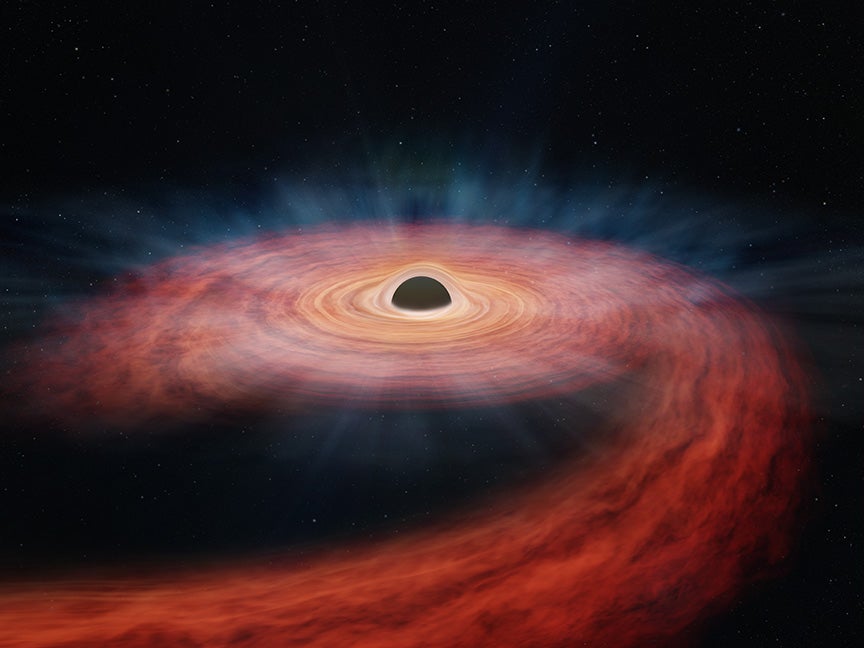
A recent discovery has unveiled the death scene of a large star, three times the mass of the Sun, being torn apart by the menacing gravitational forces of a supermassive black hole. An event like this is called a tidal disruption event (TDE). But this particular case, called ASASSN–14li, is unique for a multitude of reasons.
Two of the most important reasons: This star is one of the largest stars ever recorded undergoing a TDE and one of the closest discovered in the past decade, located just 290 million light-years away. Due to the relatively close proximity and unusual size of the star, astronomers were able to obtain key details to some unanswered mysteries behind the process of this event. The team published their results Aug. 20 in The Astrophysical Journal Letters.
Detecting TDEs
Although it’s commonly said that nothing can escape a black hole’s grasp, it’s entirely possible for a black hole interaction to occur without a luminous object disappearing into the black hole.
As an object nears a black hole, it experiences a tidal force that can stretch it apart, causing it to shed material in a TDE. But astronomers are not certain how this process begins. Hypothetically, once inside the tidal disruption radius of a black hole, the star gets turned inside-out and its material begins traveling at incredibly high speeds, creating a bright stream toward the black hole. Alternatively, the material can also become unbound. Even as this happens, the star continues its orbit and undergoes a TDE each trip around the black hole, which eventually forms a small accretion-like disk.
Forensic telescopes
Now clues — in the form of X-rays from ASASSN–14li — have confirmed this idea. X-ray data captured using NASA’s Chandra X-ray Observatory and ESA’s XMM-Newton space telescopes have allowed scientists to retrace the scene of the crime for this massive star.
“These X-ray telescopes can be used as forensic tools in space,” said co-author Brenna Mockler of Carnegie Observatories and the University of California, Los Angeles, in a press release.
X-ray observations allow the analysis of hot spots, in which particles reach high temperatures as they are energized either by huge explosions or the intense gravitational field. Additionally, using these telescopes to observe at different wavelengths produces an X-ray spectrum for the scene, showing the chemical composition of the material that’s glowing.
The Chandra spectrum reveals that “the relative amount of nitrogen to carbon that we found points to material from the interior of a doomed star,” said Mockler. Fortunately for us, th material is being pushed toward Earth and away from the supermassive black hole, as confirmed by a blueshift in the color of the light. (A more familiar redshift occurs when material is moving away from Earth.) The spectrum accentuates an abundance of nitrogen and the lack of carbon, which validates the star’s mass of three times the Sun’s mass. Now, any models astronomers use can be fine-tuned to more accurately tell the ongoing murder story for this stellar victim. “ASASSN–14li is exciting because one of the hardest things with tidal disruptions is being able to measure the mass of the unlucky star,” said co-author Enrico Ramirez-Ruiz of the University of California, Santa Cruz.
Reconstructing the crime scene
By obtaining data from ASASSN–14li and other similar TDEs, improved models can be produced to estimate the amount of nitrogen and carbon that exists around the black hole. Particularly, using NASA’s Neil Gehrels Swift Observatory, scientists have already been able to create an automated search of X-ray emitting TDEs to keep a vigilant watch on these phenomena.
And with a combination of findings, astronomers will have the chance to identify the possible presence of star clusters surviving in the harsh environment around supermassive black holes in distant galaxies.









